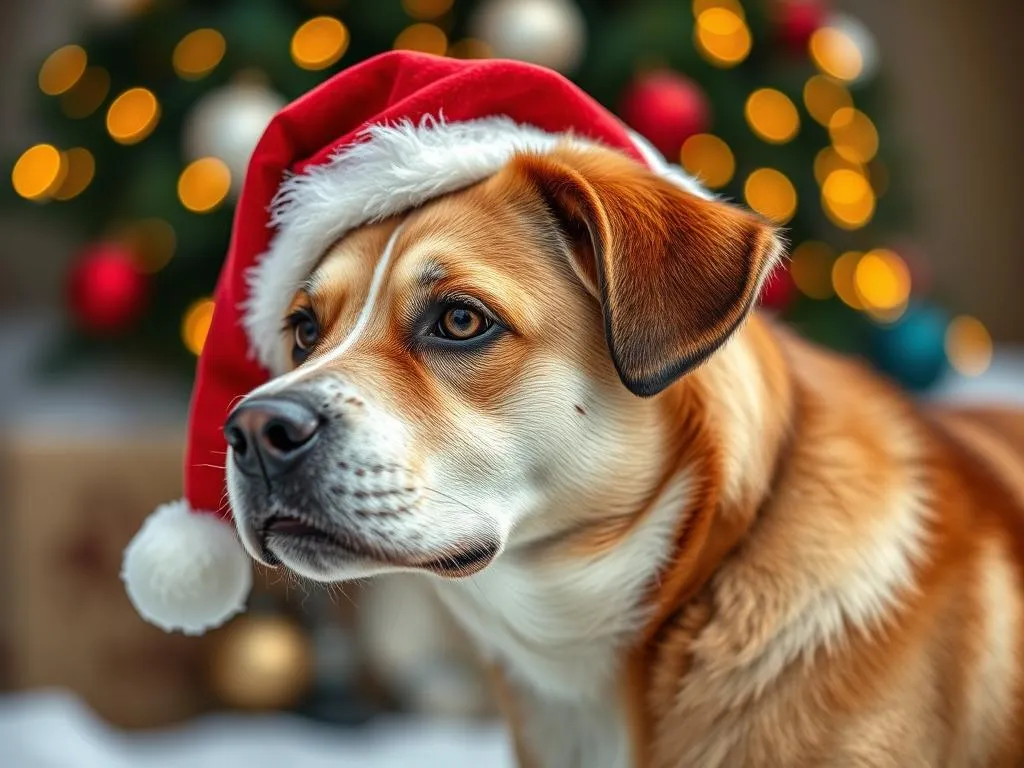
Introduction
The holiday season is a time for joy, celebration, and family gatherings, but it can also be filled with hidden dangers for our beloved canine companions. With the hustle and bustle of festivities, it’s crucial for dog owners to be aware of potential hazards that can arise during this time of year. According to the American Society for the Prevention of Cruelty to Animals (ASPCA), there is a noticeable increase in emergency calls regarding pet emergencies during the holidays. From toxic foods to holiday decorations, our furry friends can easily find themselves in precarious situations.
This article aims to provide practical holiday safety tips for dogs to help ensure that your pets stay safe and happy throughout the festive season. By understanding common holiday hazards and taking proactive measures, you can enjoy your celebrations without worry.
Understanding Holiday Hazards
Common Holiday Hazards for Dogs
During the holiday season, several hazards can threaten your dog’s safety:
- Toxic Foods: Many foods that we enjoy during the holidays can be harmful to dogs. Chocolate, grapes, raisins, onions, and certain nuts are just a few examples of toxic foods that can cause serious health issues.
- Decorations and Ornaments: Shiny ornaments, tinsel, and ribbons may attract your dog’s curiosity, leading to potential ingestion or choking hazards. Glass ornaments can shatter and cause injuries.
- Holiday Lights and Electrical Cords: Dogs may chew on electrical cords, which can result in severe injuries or even electrocution. Be sure to secure cords and lights away from dog access.
The Impact of Holiday Stress on Dogs
The holiday season often brings changes that can stress out our pets. These changes may include:
- Changes in Routine and Environment: New decorations, unfamiliar scents, and altered routines can confuse dogs, leading to anxiety.
- Increased Noise Levels and Visitors: Loud music, fireworks, and the sounds of guests can overwhelm sensitive dogs.
- Signs of Stress in Dogs: Watch for signs such as excessive barking, pacing, hiding, or destructive behavior, which may indicate that your dog is feeling stressed.
Safe Holiday Foods
Foods to Avoid
It’s essential to keep certain holiday foods away from your dog. Here’s a list of common toxic foods:
- Chocolate: Contains theobromine, which can be fatal to dogs.
- Grapes and Raisins: Can cause kidney failure in dogs.
- Onions and Garlic: Can lead to anemia and gastrointestinal upset.
- Alcohol: Even small amounts can be toxic.
Understanding why these foods are harmful can help you make informed decisions during the holiday season. Always opt for dog-safe treats instead.
Safe Treat Alternatives
Fortunately, there are plenty of safe treat alternatives to keep your canine friend happy during the holidays. Here are some ideas:
- Carrots and Green Beans: Fresh, crunchy vegetables can be a healthy snack.
- Pumpkin Puree: A great source of fiber, plain pumpkin (not the spiced pie filling) can be a delightful treat.
- Homemade Dog Treats: Consider making your own dog treats. Here are a couple of simple recipes:
Peanut Butter Treats
- 1 cup whole wheat flour
- 1/2 cup peanut butter
- 1/4 cup chicken broth
- Mix ingredients, roll out, and cut into shapes. Bake at 350°F for 20 minutes.
Pumpkin Dog Biscuits
- 1 cup pumpkin puree
- 2 1/2 cups whole wheat flour
- 1 egg
- Mix, roll out, cut into shapes, and bake at 350°F for 30 minutes.
These treats are not only safe but also a great way to include your dog in the festivities.
Holiday Decorations Safety
Safe Decorating Practices
When decorating your home for the holidays, it’s vital to choose pet-safe decorations. Here are a few tips:
- Opt for Non-Toxic Materials: Avoid decorations made from potentially harmful materials, such as glass or small parts that can be swallowed.
- Secure Decorations: Place ornaments and tinsel high enough that your dog cannot reach them. Use sturdy hooks to secure decorations that dangle.
Managing Holiday Plants
Many traditional holiday plants can be toxic to dogs. Here’s a list of common holiday plants and their toxicity levels:
- Poinsettias: Mildly toxic, can cause stomach upset.
- Mistletoe: Highly toxic, can lead to serious health issues.
- Holly: Can cause vomiting and diarrhea.
Instead of traditional holiday plants, consider using pet-safe alternatives like artificial plants or non-toxic greenery.
Creating a Stress-Free Environment
Preparing for Guests
The influx of guests during the holidays can be overwhelming for some dogs. Here are ways to help your pet adjust:
- Introduce Dogs to New People Gradually: Allow your dog to approach new guests at their own pace. Encourage visitors to ignore the dog initially to avoid overwhelming them.
- Create a Safe Space: Designate a quiet area where your dog can retreat if they feel anxious. Include their bed, toys, and some calming music to help them relax.
Maintaining Routine
Despite the holiday festivities, it’s essential to keep your dog’s feeding and walking schedules as consistent as possible. This helps maintain a sense of normalcy for your pet amidst the chaos. Incorporate holiday activities into their routine, such as taking them for a walk before guests arrive or including them in family games outside.
Travel Safety Tips
Traveling with Dogs
If you plan to travel with your dog during the holidays, prioritize their safety:
- Best Practices for Car Safety: Use a pet seatbelt or a secure carrier to keep your dog safe while driving. This not only protects your dog but also ensures that they do not distract the driver.
- Preparing for Stops and Breaks: Plan regular stops during long trips for bathroom breaks and to allow your dog to stretch their legs. Never leave your dog alone in a parked car, as temperatures can rise quickly, leading to heatstroke.
Finding Pet-Friendly Accommodations
If you’re staying overnight somewhere, it’s essential to find pet-friendly accommodations. Here are tips for booking:
- Research Pet Policies: Before booking, ensure that the hotel or rental is pet-friendly and check for any additional fees.
- What to Pack for Dogs: Bring your dog’s food, water, bowls, leash, waste bags, and any medications. Also, include familiar items like their bed or favorite toy to make them feel at home.
Emergency Preparedness
First Aid for Dogs
Despite our best efforts, accidents can happen. Here are some basic first aid tips for common holiday-related injuries:
- Cuts and Scrapes: Clean the wound with mild soap and water. Apply a sterile bandage if necessary.
- Choking: If your dog is choking, perform the Heimlich maneuver for dogs or take them to the vet immediately.
Having a pet first aid kit on hand is essential. Include items such as bandages, antiseptic wipes, tweezers, and a digital thermometer.
Local Veterinary Resources
During the holidays, it’s crucial to have access to emergency veterinary services. Here’s how to prepare:
- Research Local Veterinary Clinics: Identify nearby clinics and emergency hospitals in advance.
- Keep Contact Information Handy: Ensure you have up-to-date contact information for your veterinarian and any emergency services.
Conclusion
In conclusion, ensuring a safe holiday season for your dog requires awareness and preparation. By understanding potential hazards, maintaining routines, and providing safe alternatives, you can help your furry friend enjoy the festivities as much as you do.
As you celebrate the holidays, remember these holiday safety tips for dogs to keep them safe, healthy, and happy. Share your experiences and any additional tips you may have to help other dog owners navigate the holiday season with their pets.
Happy holidays to you and your four-legged family members!









